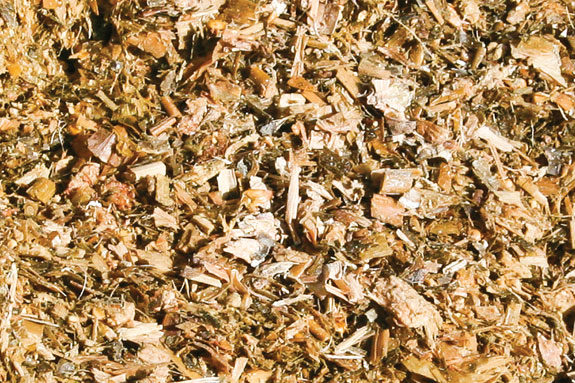Does it go to work fast enough to protect the quality of the forage just harvested?
Many products boast about how many million or billion count of active Lactobacillus acidophilus the product contains. Others lay claim that they have selected a particular strain of enzyme.
The greater question that needs to be asked is: How fast does it go to work when it has been applied? How fast and to what extent do the bugs multiply when applied? This should be one of the criteria considered when choosing an inoculant. For a complete and effective fermentation, it is necessary to have a rapid explosion of the enzymes when contact with a harvested forage is made.
Does it control the heat of the forage during the fermentation process?
Heat is an intricate part of the fermentation process. Inoculants should control the heat of the forage during the fermentation process. Too high heat or prolonged heat destroys the feed value of the forage. To maintain or improve on the original feed value is crucial.
Does it take the forage through the fermentation process before the forage runs out of the necessary elements and environment for fermentation to properly occur and complete itself?
First, it is necessary whether you are storing the forage in bunker silos, upright silos or silage bags, to harvest at moistures that are optimum for the storage system you are utilizing.
Second, it is important to get proper compaction, regardless of the storage system being used. This sets up things that are crucial for a total and complete fermentation. With good packing, we are limiting the oxygen available. It is crucial that fermentation be completed prior to the oxygen supply being totally utilized. If this is not achieved, then you have an incomplete fermentation and a feed that is unstable.
Does it control mold and give the forage bunk life?
Much of this is controlled by the previously stated steps. The next thing that must occur for the control of molds and to attain bunk life is for the fermentation process to control the pH of the feed. In the end it must lower the pH. If this doesn’t occur then you have a feed that spoils easily, has limited bunk life, has poor palatability and, in the end, adds to the cost of your feed ration.

How can I determine if the product that I am using is giving a proper return on my investment?
Here is how some farmers have come to determine if what they are using is giving them a proper return and what the response is with what they are using. In this instance, two identical upright structures were filled with corn silage. The farmer had a custom harvester come in. They filled both silos in one afternoon with corn from the same field. There was a blower set at each silo and they were filled simultaneously. Each silo was treated with a different product. After the chopping process had been completed and the fermentation had been complete, samples were drawn from both structures and submitted to a forage lab. The results of these are shown in Table 1.
In this instance, when the farmer switched from Silo A to Silo B (with 74 milking cows), he had to add three bushels of shelled corn a day to get the same production. With corn at $3 a bushel x three bushels a day = $9 x 30 days = $270 x 12 months = $3,240.

In another scenario, a farmer was round-baling hay. He was using an inoculant on his hay. In the process of baling, he ran out of product. He switched to another and completed baling his field. Whenever he does something different, he marks the bales and his nutritionist samples the feed and submits to a lab. The results of that test are demonstrated in Table 2.
In today’s farm economy with low milk prices and depressed beef prices, these are vital differences that can affect the bottom line and make a difference whether you are in profit or loss. FG












